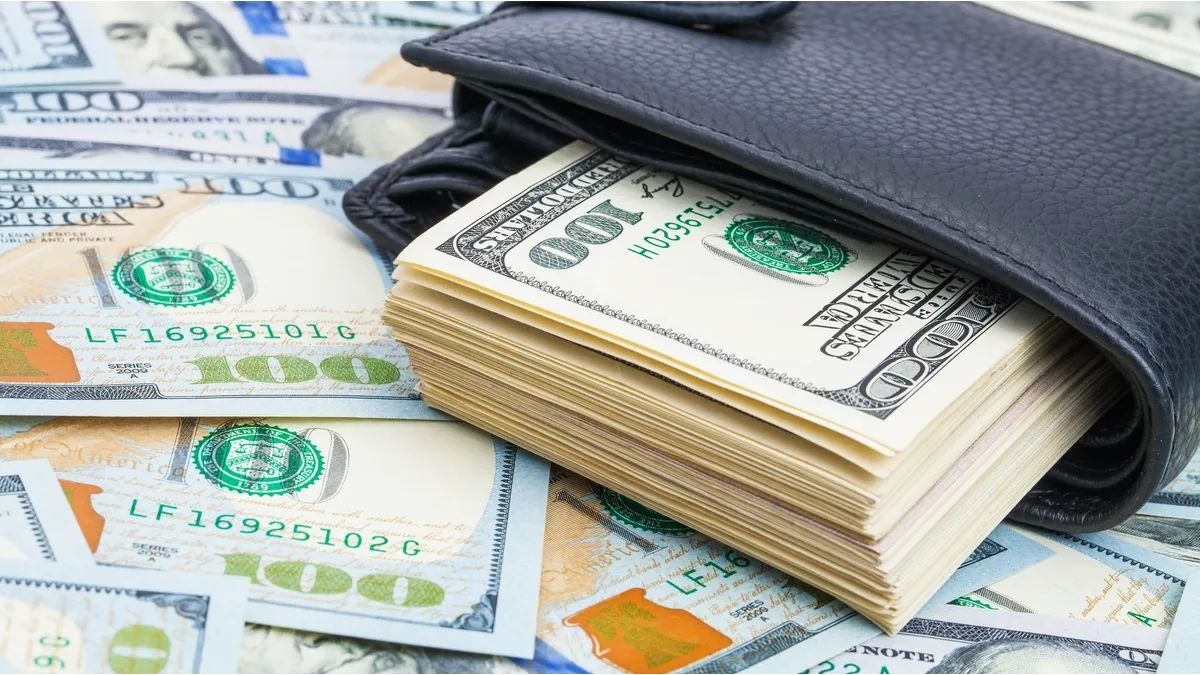Starting this Monday, July 1, individuals with savings capacity They will be able to use the US$200 quota again for the purchase of dollar savingsAlthough this exchange rate remains the most expensive on the market, the gap with parallel exchange rates has narrowed considerably in the last month.
The price of the so-called “solidarity dollar” to which small savers can legally and easily access is that of the retail dollar, but with an additional 60% surcharge for different taxes. According to a survey by Ámbito, The current value is $1,488.80.
The price rose just 1.8% in JuneMeanwhile he blue and the MEP (the other two dollars with which it “competes”) recorded a monthly jump of more than 11%. Therefore, the difference with the blue was reduced from $250.70 to $140.84 in the case of the MEP and from $237.40 to $123.80 in the case of the blue.
It is worth remembering that lifting the currency controls and unifying the exchange rate were a campaign promise of the Government. However, the shortage of dollars at the Central Bank (BCRA) prevented Javier Milei’s economic team from taking significant measures in that regard.
This Friday the Minister of Economy, Luis Caputoannounced the beginning of the “second stage” of monetary policy and said that the exit from the stocks is projected for a later stage, although he did not give precise dates since by that time signs of economic growth should be seen.
This is why restrictions on quantities and taxes on prices for the purchase of dollars in the official retail market still remain, two decisions that discourage the outflow of foreign currency from the BCRA.
In this context, and given the difficulties of the majority of workers in making ends meet, it is worth noting that In the last three months, the sale of dollar savings exceeded the purchase.
According to data from the monetary authority, in May the number of sellers quadrupled the number of buyers, and in the accumulated 2024 the Formation of External Assets (FAE) for operations of “natural persons” showed a positive balance of US$10 million for the Central Bank.
Why is the MEP dollar more attractive than the savings dollar?
To buy $200 on the first business day of July, $297,760 is needed. On the other hand, to buy the MEP dollar you need $269,592 ($28,406 less)since in this case the quote reaches $1,347.96Therefore, for those who have the possibility to hedge their investments in US currency, the “stock market” dollar is more convenient.
The MEP dollar is not only more attractive than “savings” because of the price but also because it has no restrictions on quantities. The operation to acquire these two exchange rates does not vary too much since both can be purchased at a trusted bank, with the simple opening of a dollar account. The additional step to buy the “stock market” dollar is the opening of a custodian or client account, which is what allows trading stocks and bonds.
The MEP can also be obtained through a brokerage firm. In some cases, financial institutions carry out the entire transaction, while in others, it is the person who must first buy the AL30 (or GD30) bond in pesos, and then sell it in dollars, respecting the 24-hour “parking” period (time during which the bond must be immobilized).
In the case of the blue dollar, to buy US$200 you need $273,000 ($24,760 less than in the case of the retailer with taxes) since its price is located in the $1,365.
Who can’t buy dollar savings?
The following people cannot buy savings dollars:
- Those who bought the MEP or CCL dollar in the last 90 days.
- Those who received salaries in 2020 through the Production and Work Assistance program (ATP).
- Those who receive social plans or state aid such as the Universal Child Allowance (AUH).
- Monotributistas who have ongoing credits at a subsidized rate.
- Those who do not have their income declared.
- Joint holders of bank accounts.
- Those who spent their $200 limit with their card, which includes paying for services such as Netflix or Spotify in dollars.
- Those who have a 12-installment payment plan for credit card debts.
- Those who refinanced their debts with banks for personal, collateral or mortgage loans.
- Beneficiaries of the income reinforcement that was paid in May and June 2022.
- Those who receive state subsidies for the payment of electricity and gas rates from September 2022.
- People who enter the pension moratorium to retire without having 30 years of mandatory contributions.
- Registered workers, retirees and pensioners of the ANSES who access the new credits of up to $400,000.
Source: Ambito
I am a 24-year-old writer and journalist who has been working in the news industry for the past two years. I write primarily about market news, so if you’re looking for insights into what’s going on in the stock market or economic indicators, you’ve come to the right place. I also dabble in writing articles on lifestyle trends and pop culture news.




